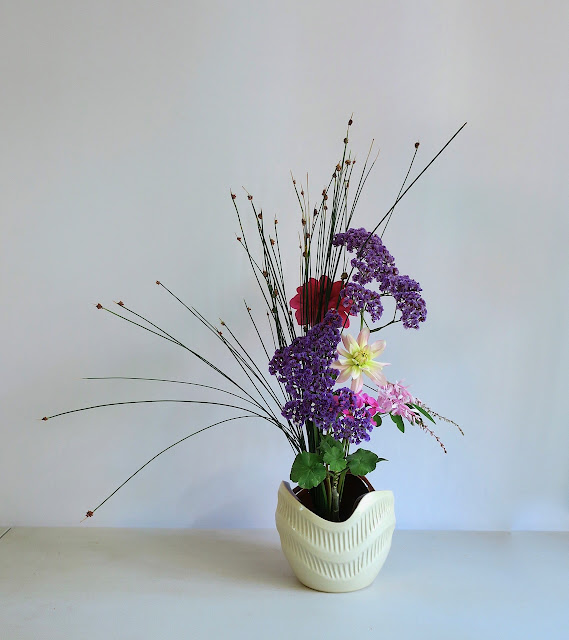Last week Laurie and I travelled west along the Victorian coast to the town of Warrnambool to see an exhibition by our artist friend Ben Fennessy. Ben and his wife Helen are long standing friends, since Helen and I worked together in the mid-1980's. Another connection with this area is that the nearby town of Koroit was where Laurie's mother spent her childhood.
While in the area we visited Tower Hill Wildlife Reserve which incorporates the lake and islands within the caldera of a large inactive volcano. The site has been revegetated since earlier farming activity was discontinued. The planting has focussed on the re-introduction of native flora species that were present prior to the European farming. Native fauna have also been re-introduced into the reserve. The view above is from one of the high points on the north side of the crater rim overlooking the lake. In the further distance the Southern Ocean can be seen.
On some of the walls of the crater, layers of volcanic ash deposits are evidence of the past eruptions of the volcano.
The most conspicuous of the re-introduced fauna are the Emus, Australia's largest birds. They tend to congregate around the car park and picnic area, being the least timid of the re-introduced species. I find their size and general inquisitive nature makes them rather intimidating creatures.
This relatively close-up photo shows the skin of the neck and head is a shiny pale blue. Like ostriches and cassowaries, emus are flightless birds.
* * * * *
In the world of ikebana, I set my Melbourne students the exercise of making a Mazesashi arrangement a couple of weeks ago. This style requires the use of a variety of materials, five to seven being usual. The exercise is not as easy as it may sound because, among other things, asymmetry in the volume of materials is necessary.
Marisha's arrangement included a variety of pink flowers which created harmony in the ikebana. She used a small amount of blue-grey Eucalyptus stems which provide a soft colour and shape contrast.
My ikebana this week arose from a walk around the garden and my noting that the New Zealand Flax Phormium tenax, suffered quite a battering by the three very hot days we had some weeks ago. Almost all the older leaves had drooped badly and gone pale yellow from their middle to the tips. As I started to cut them away I noticed the beauty of their lines and some subtle marking in the broader sections that had not curled into straws.
The Japanese vessel is hexagonal in cross-section and has a tenmoku glaze.
Greetings from Christopher
14th April 2024







.jpeg)
.jpeg)
No comments:
Post a Comment